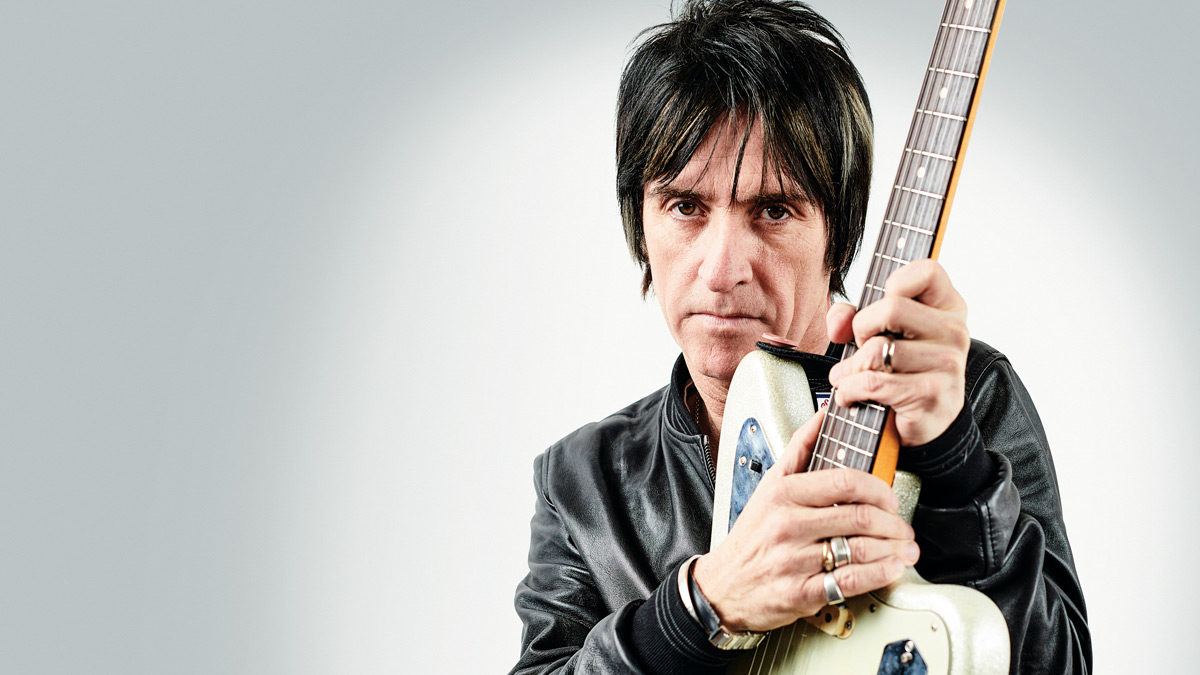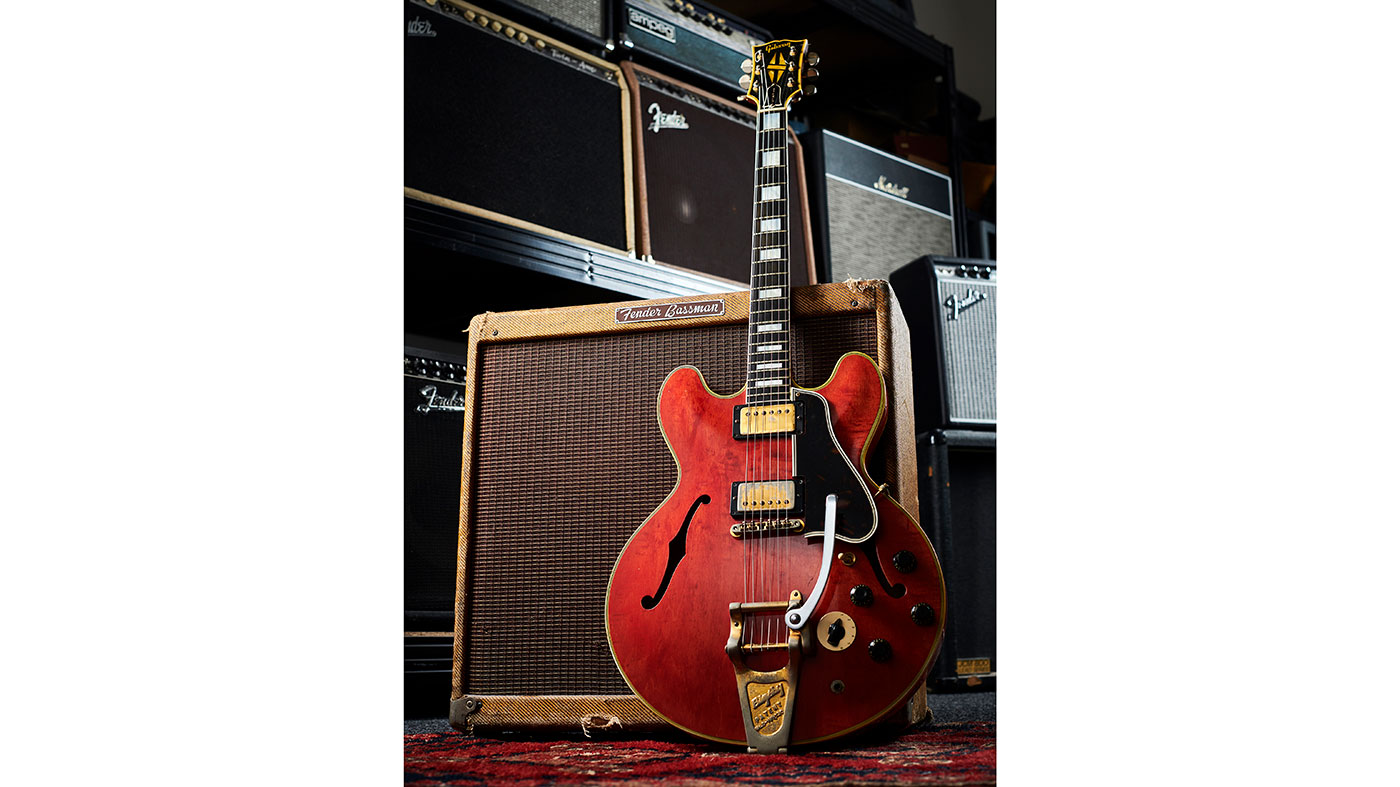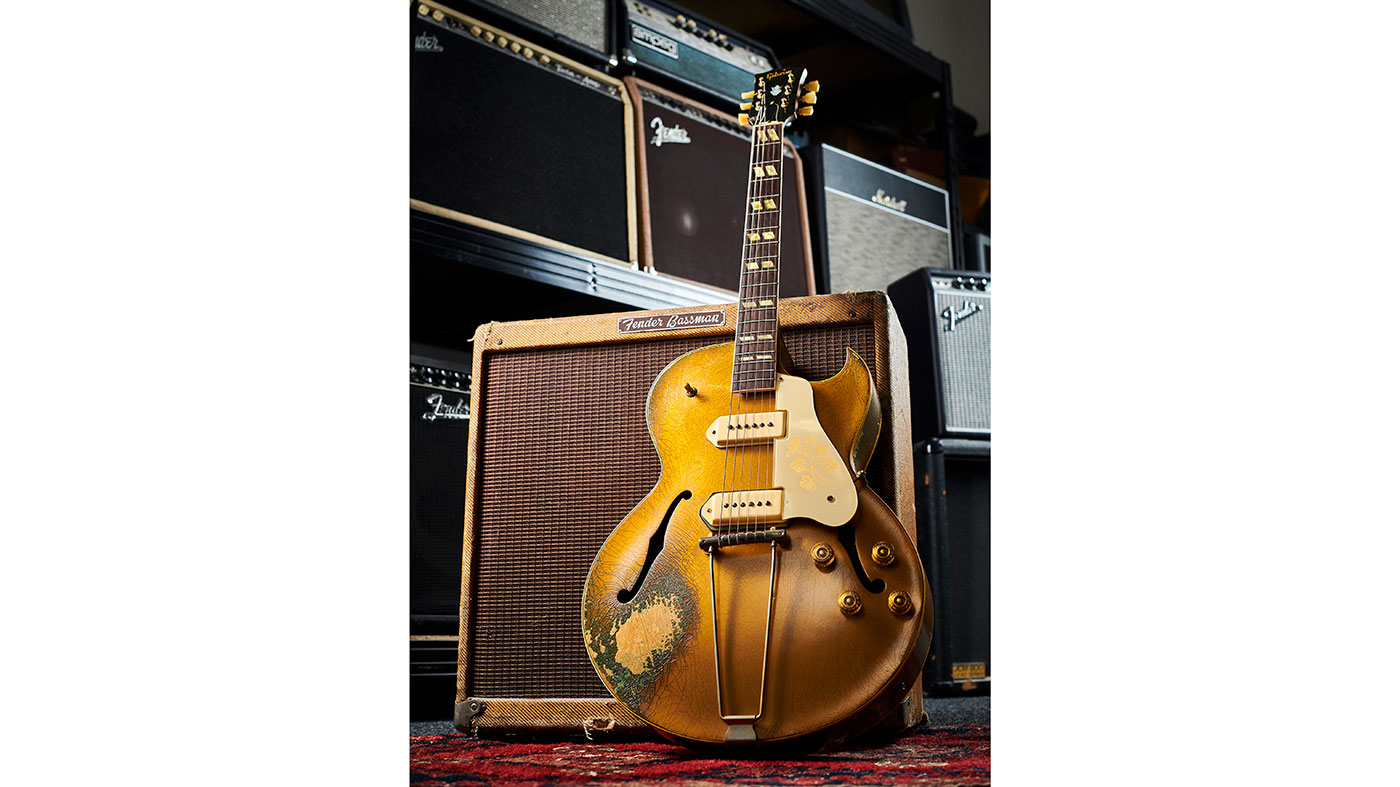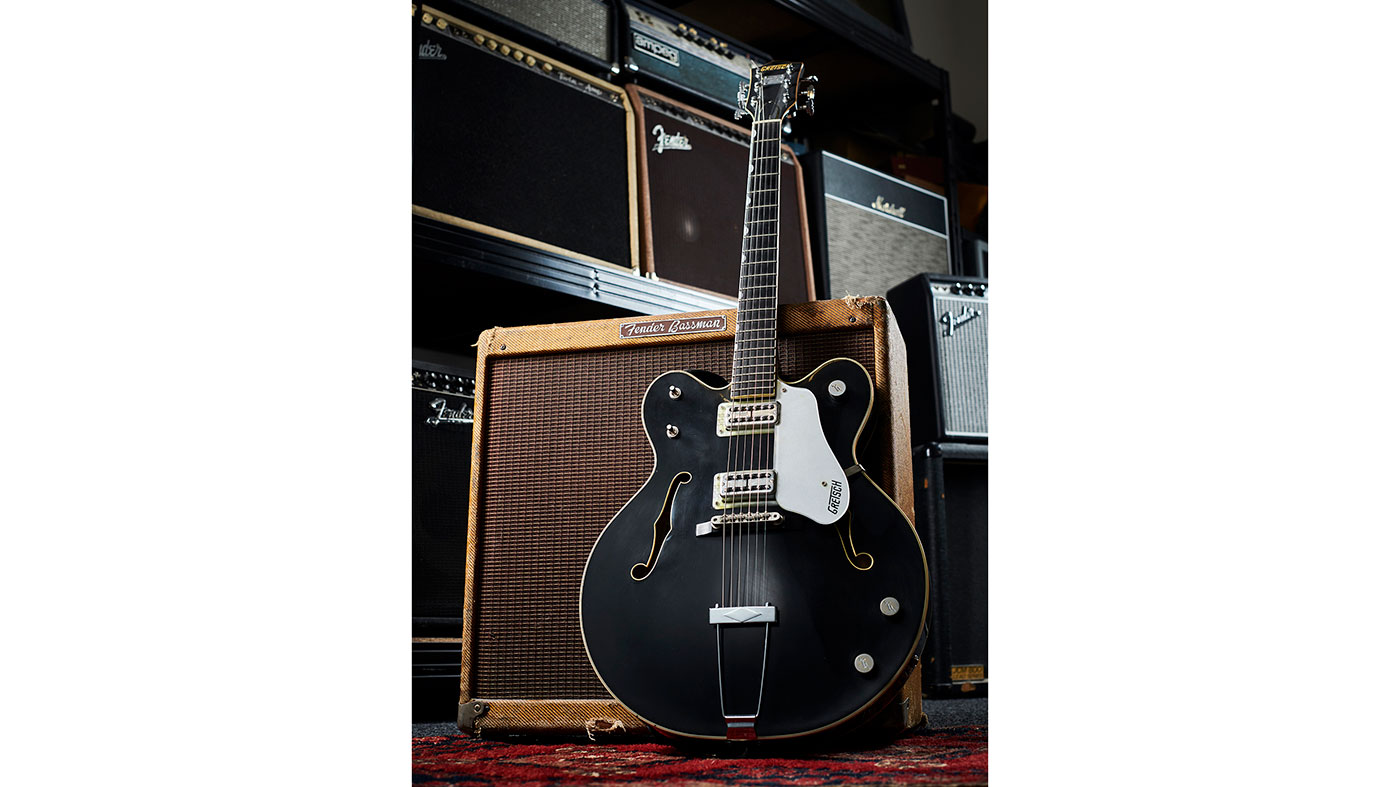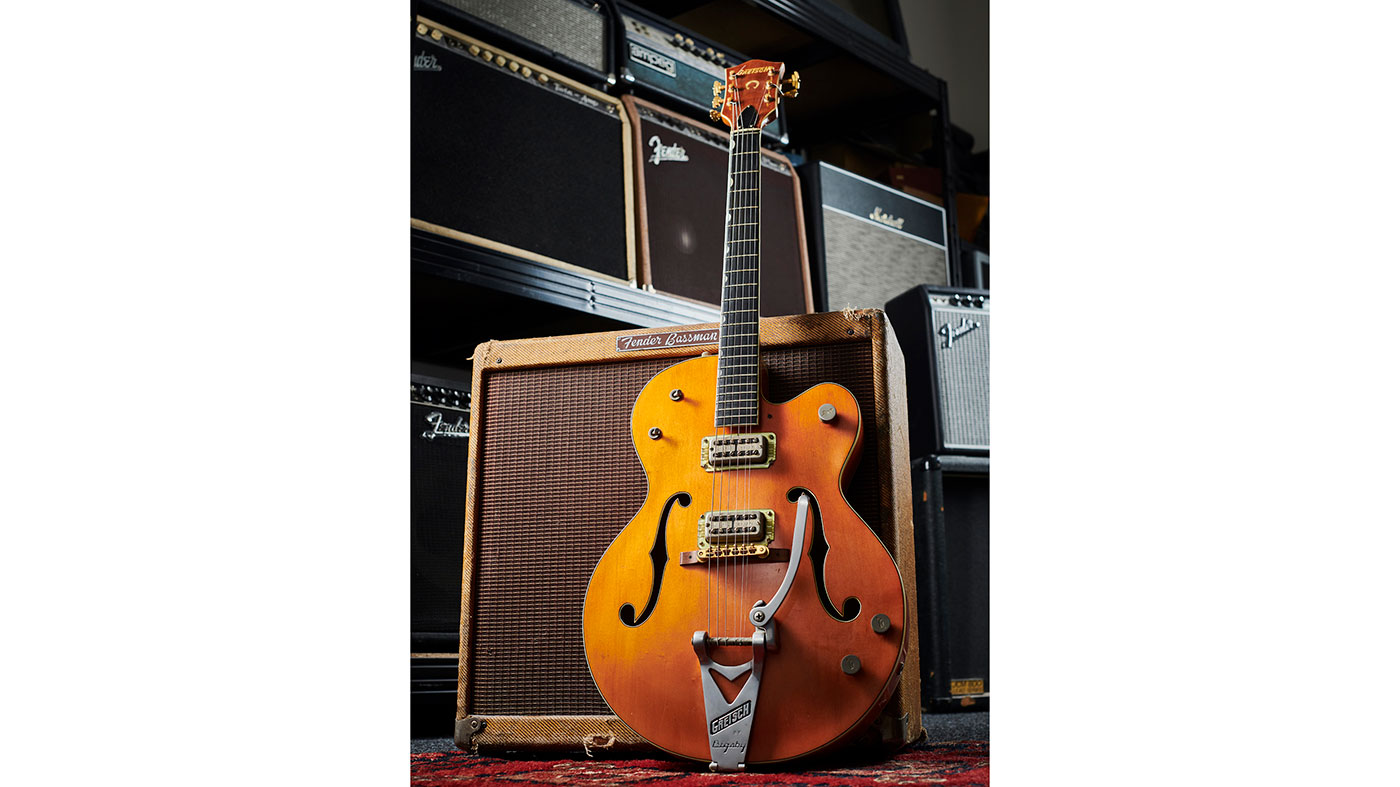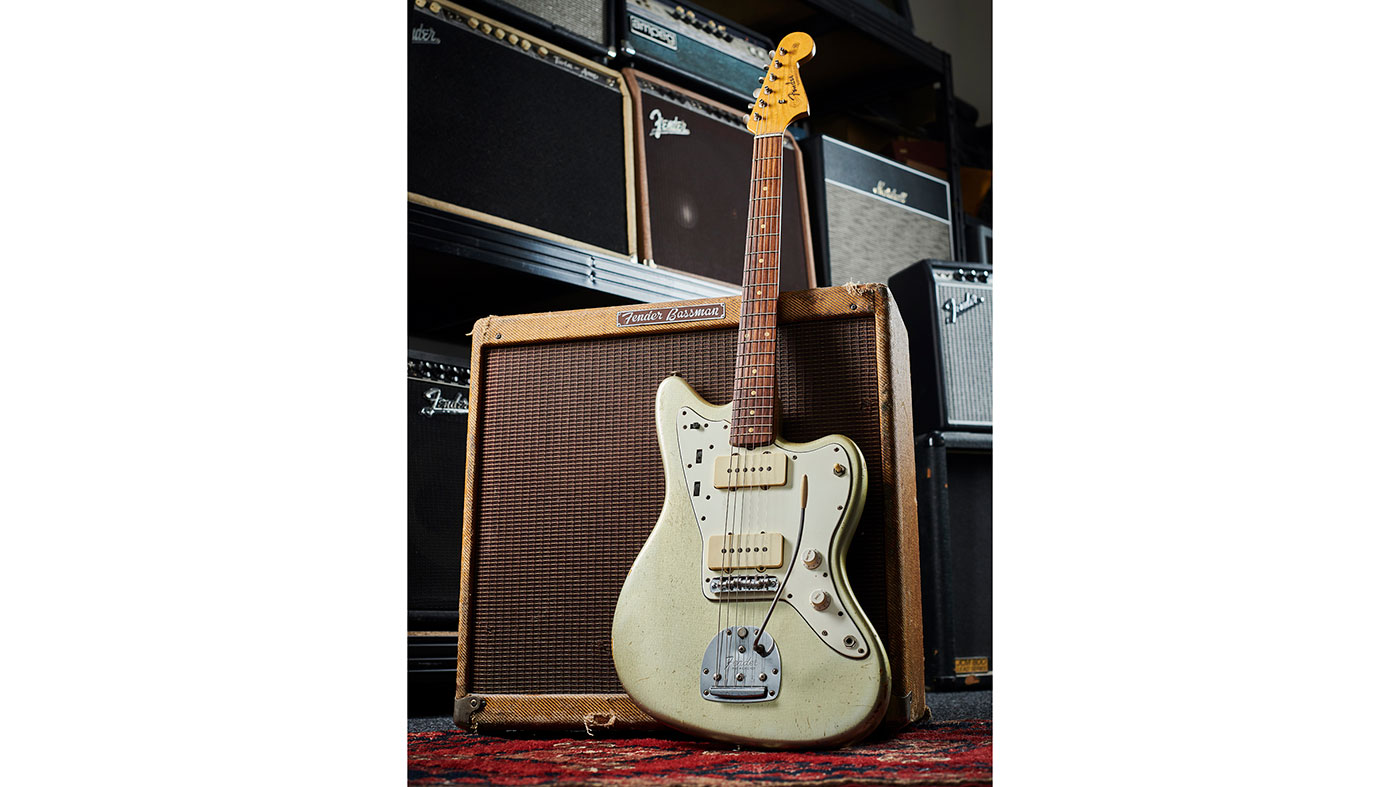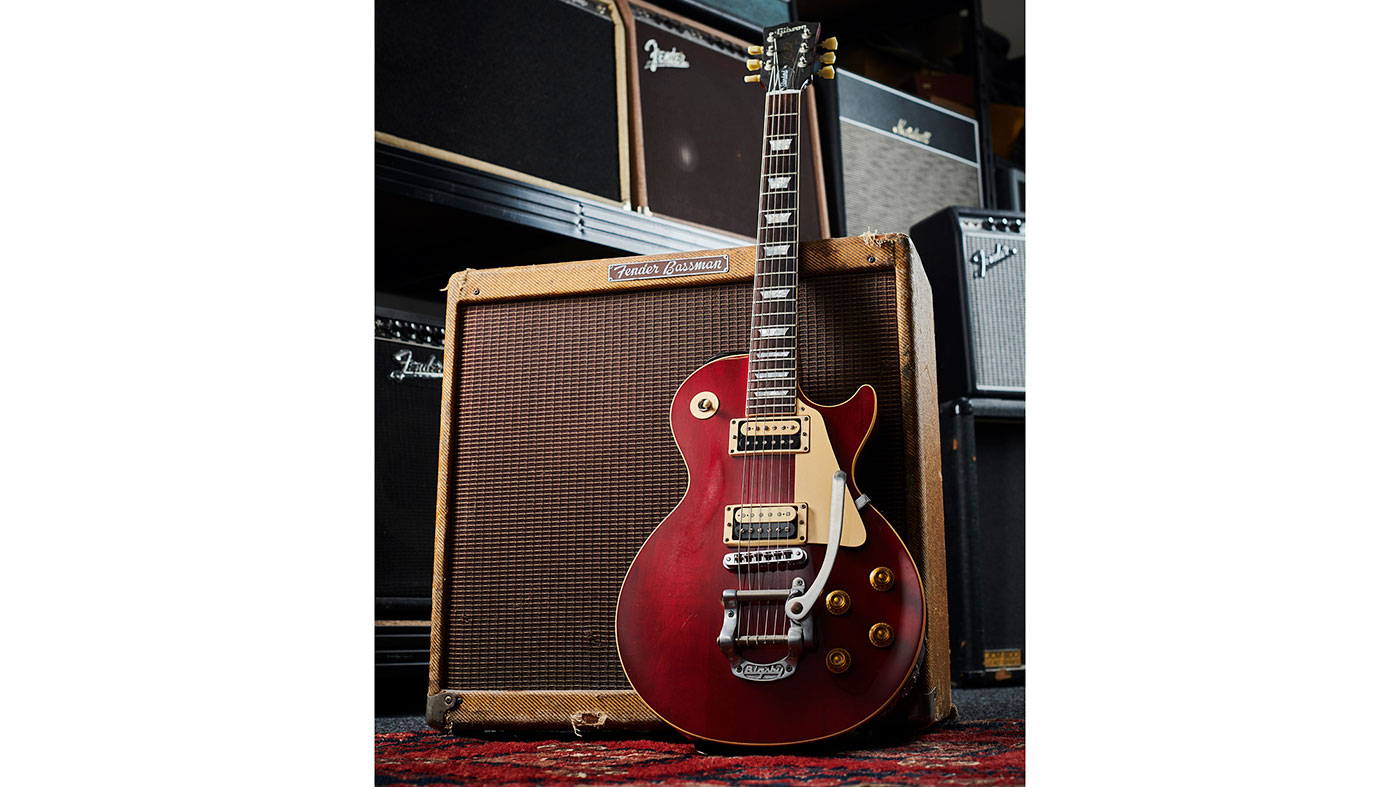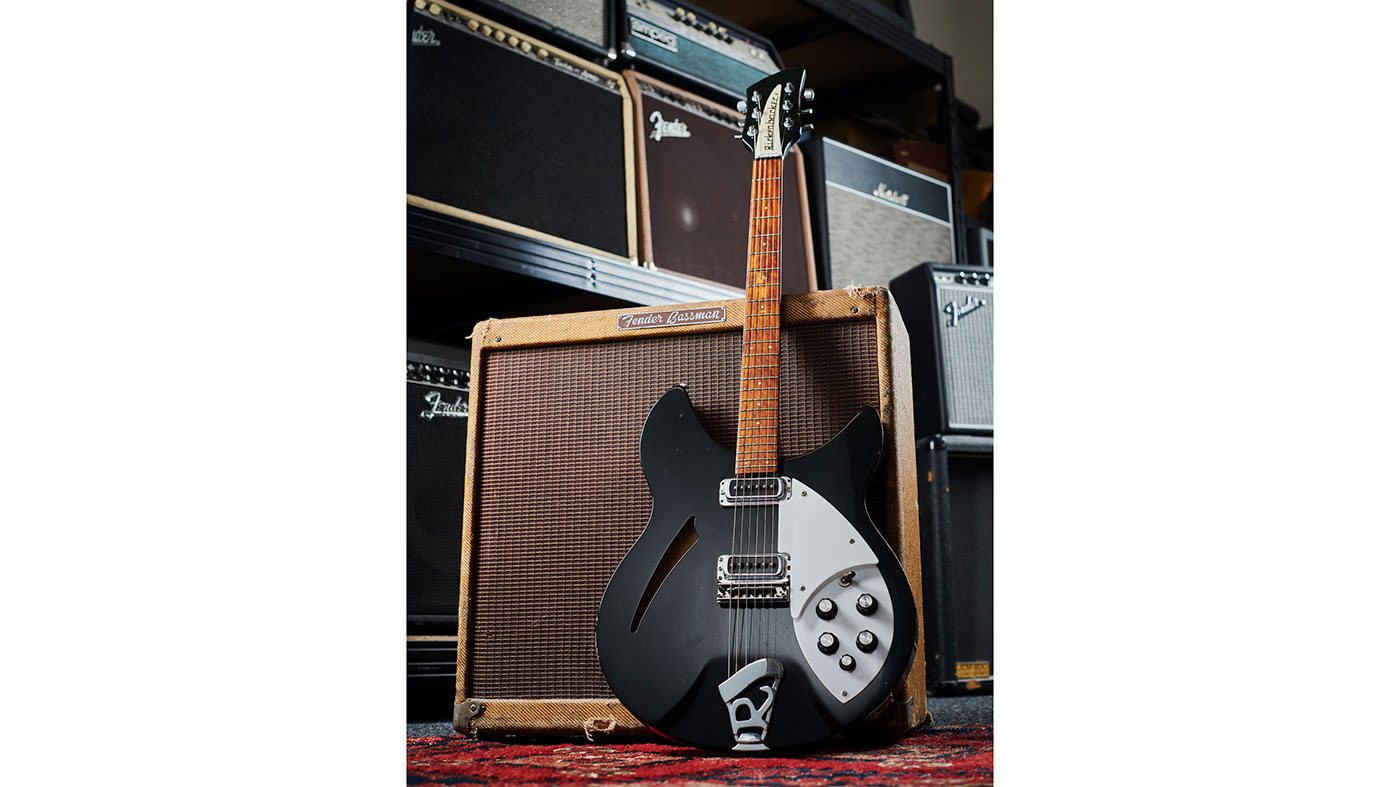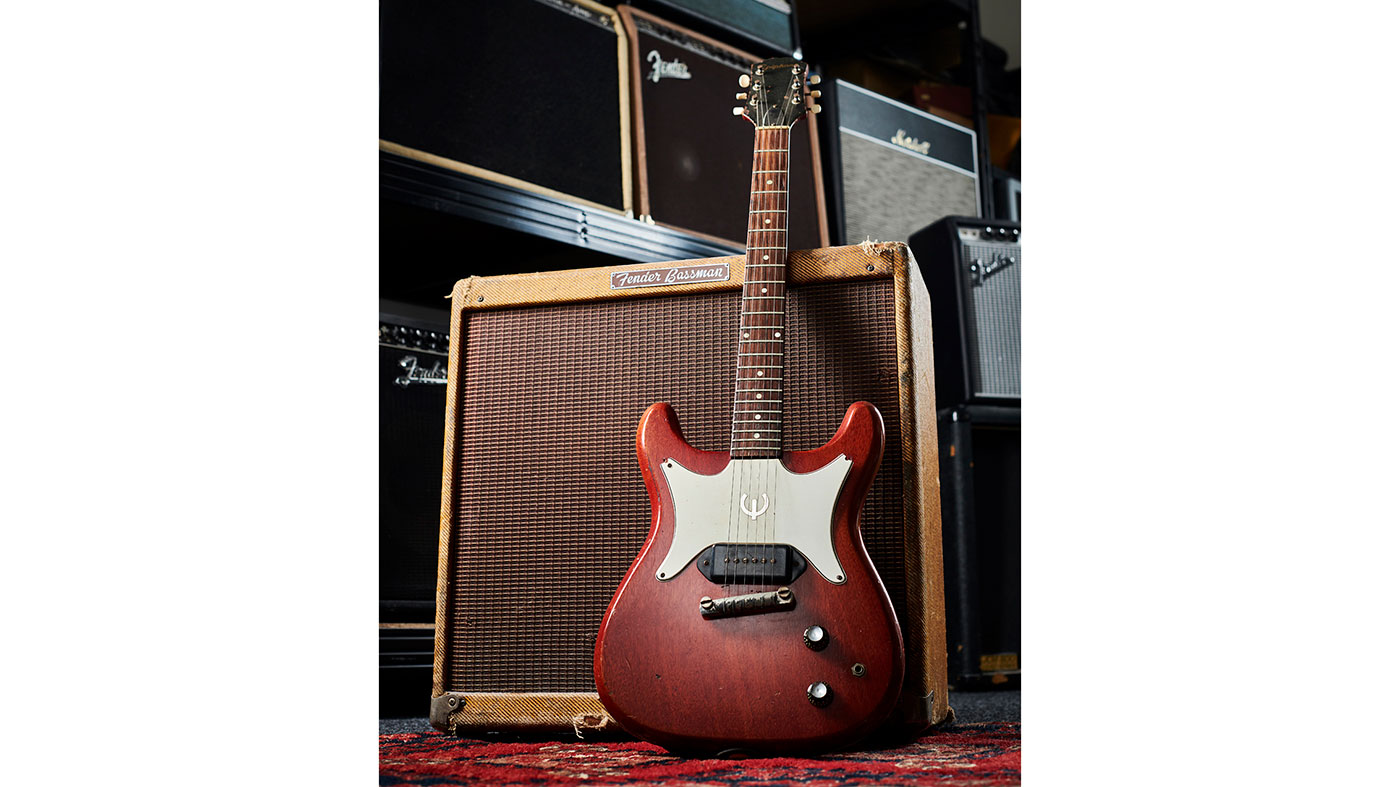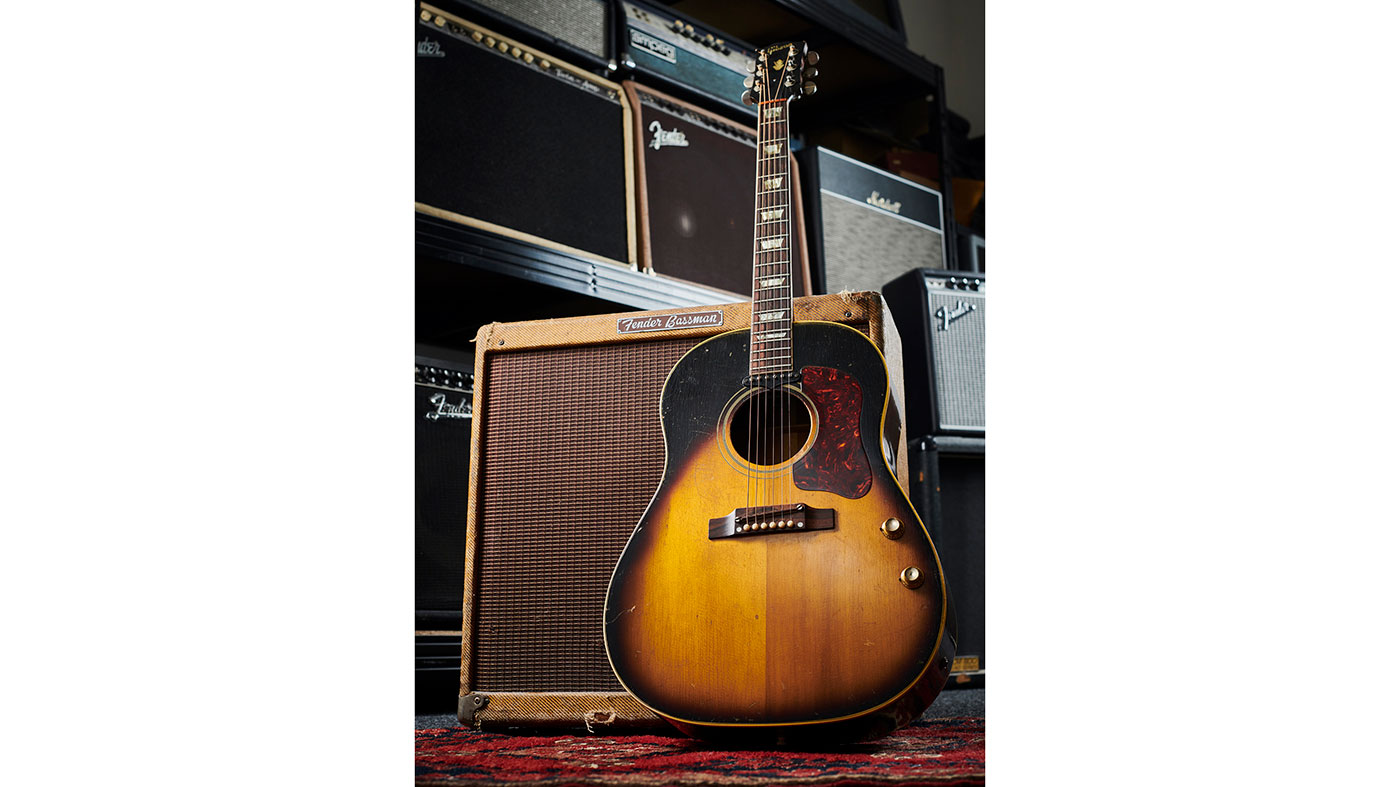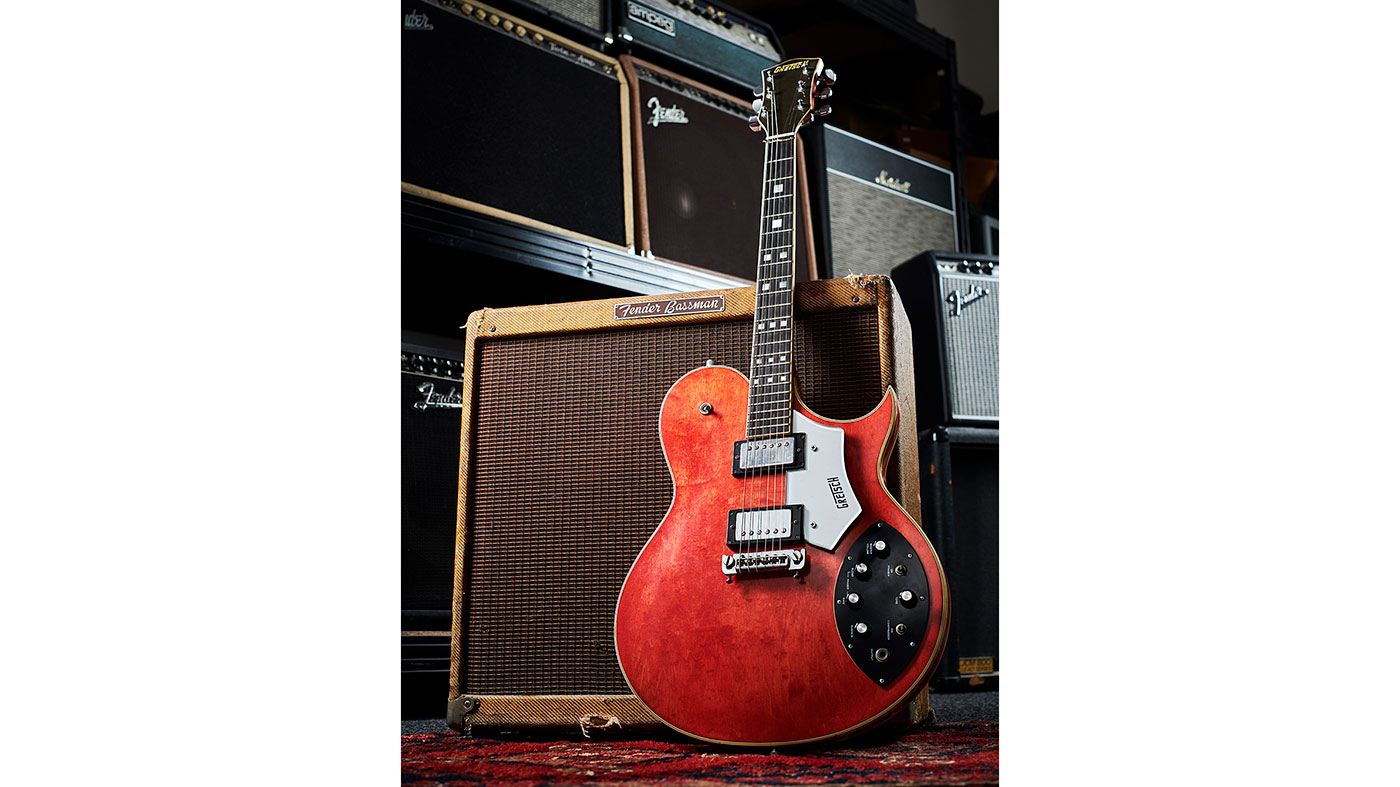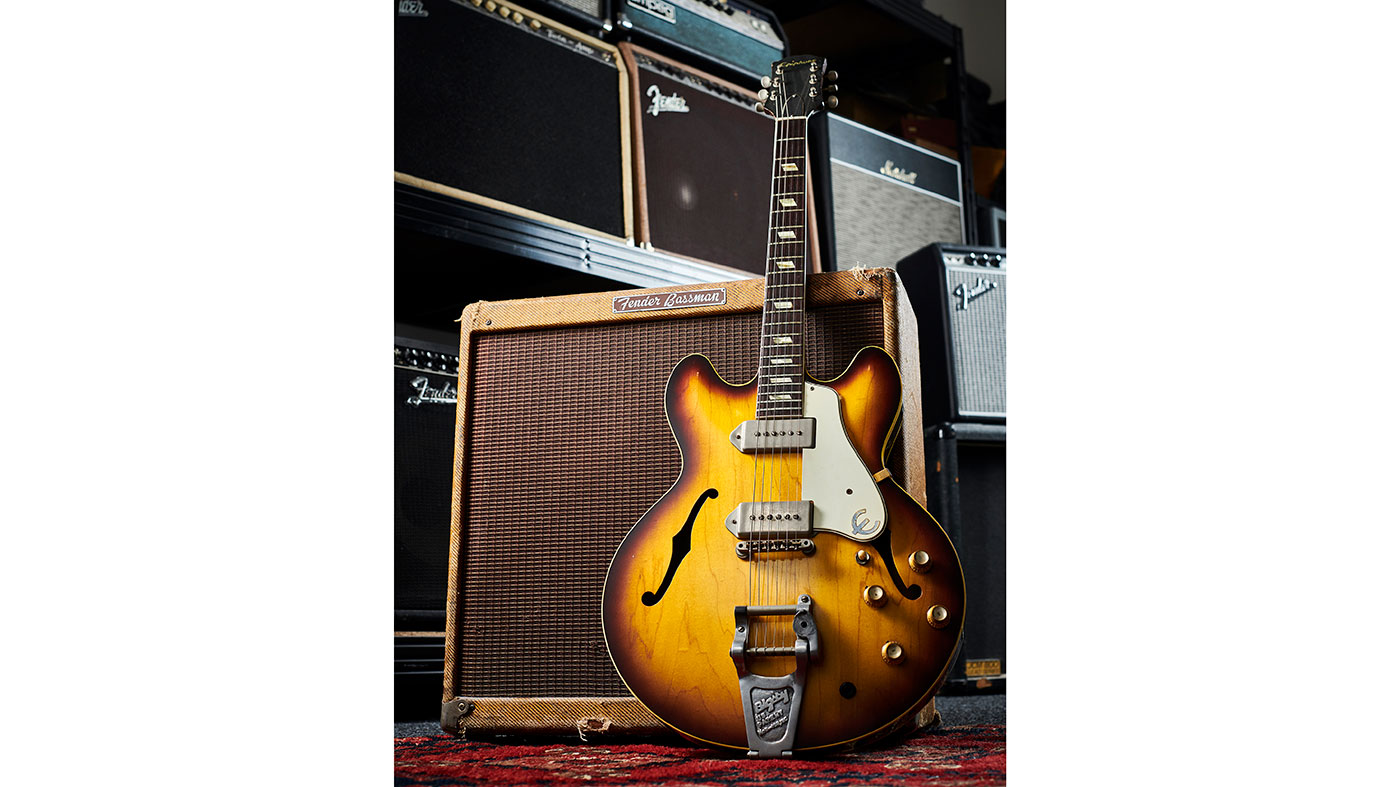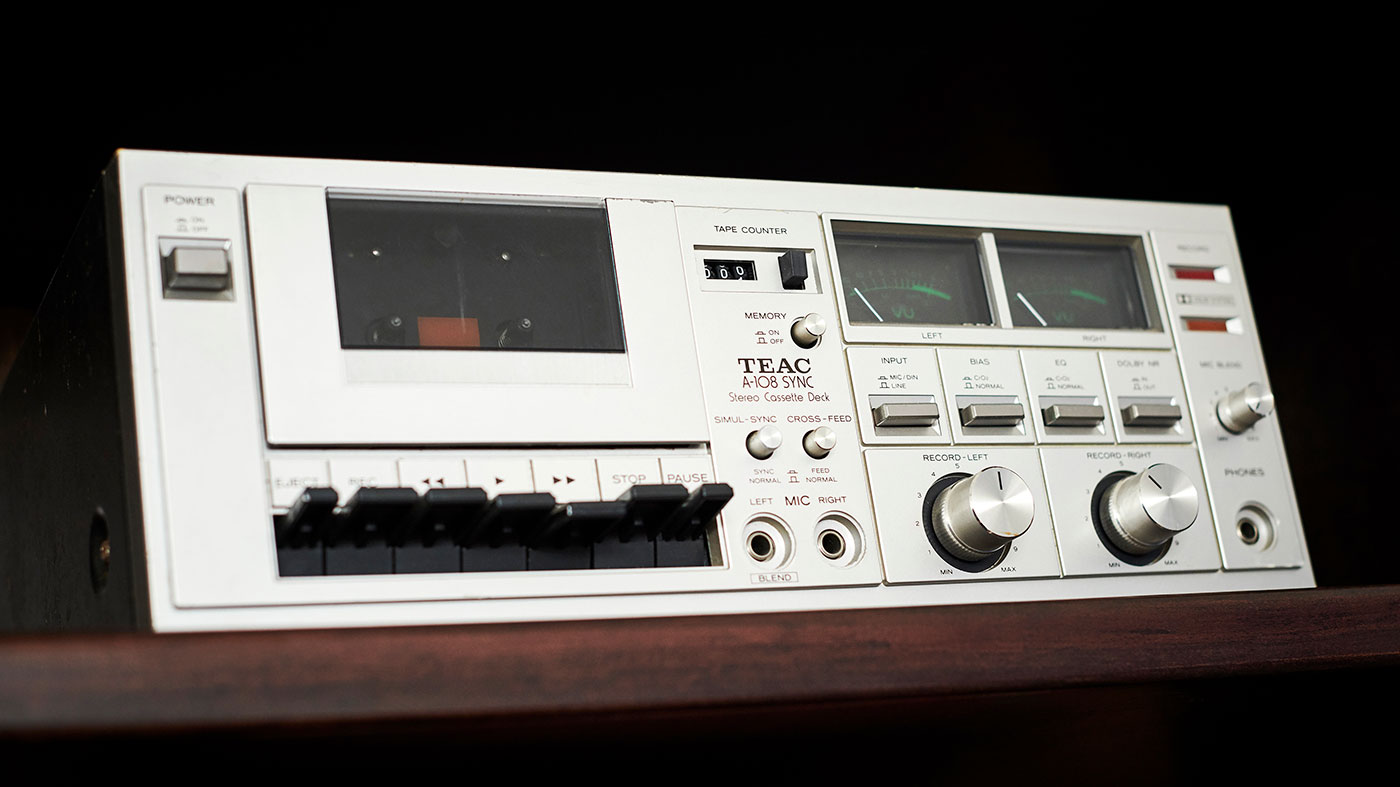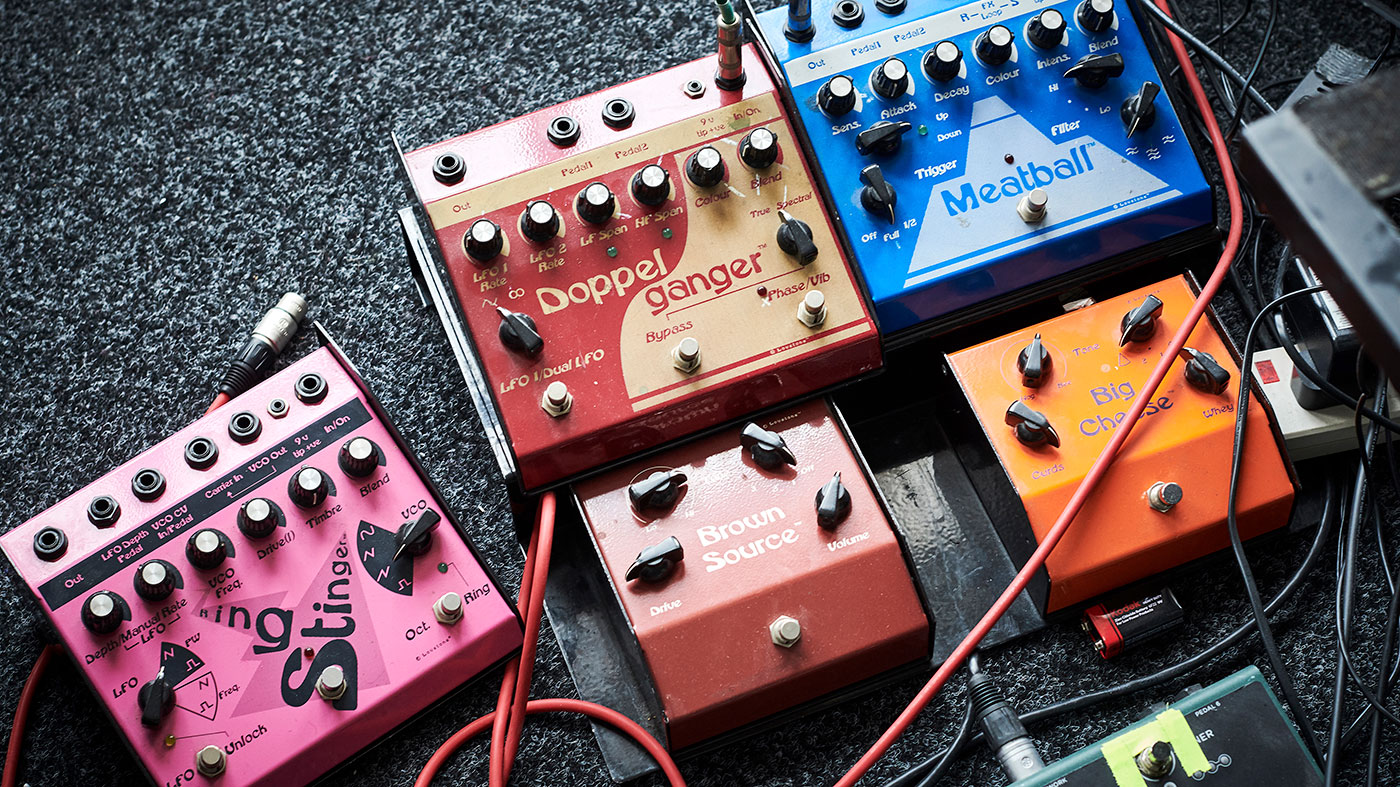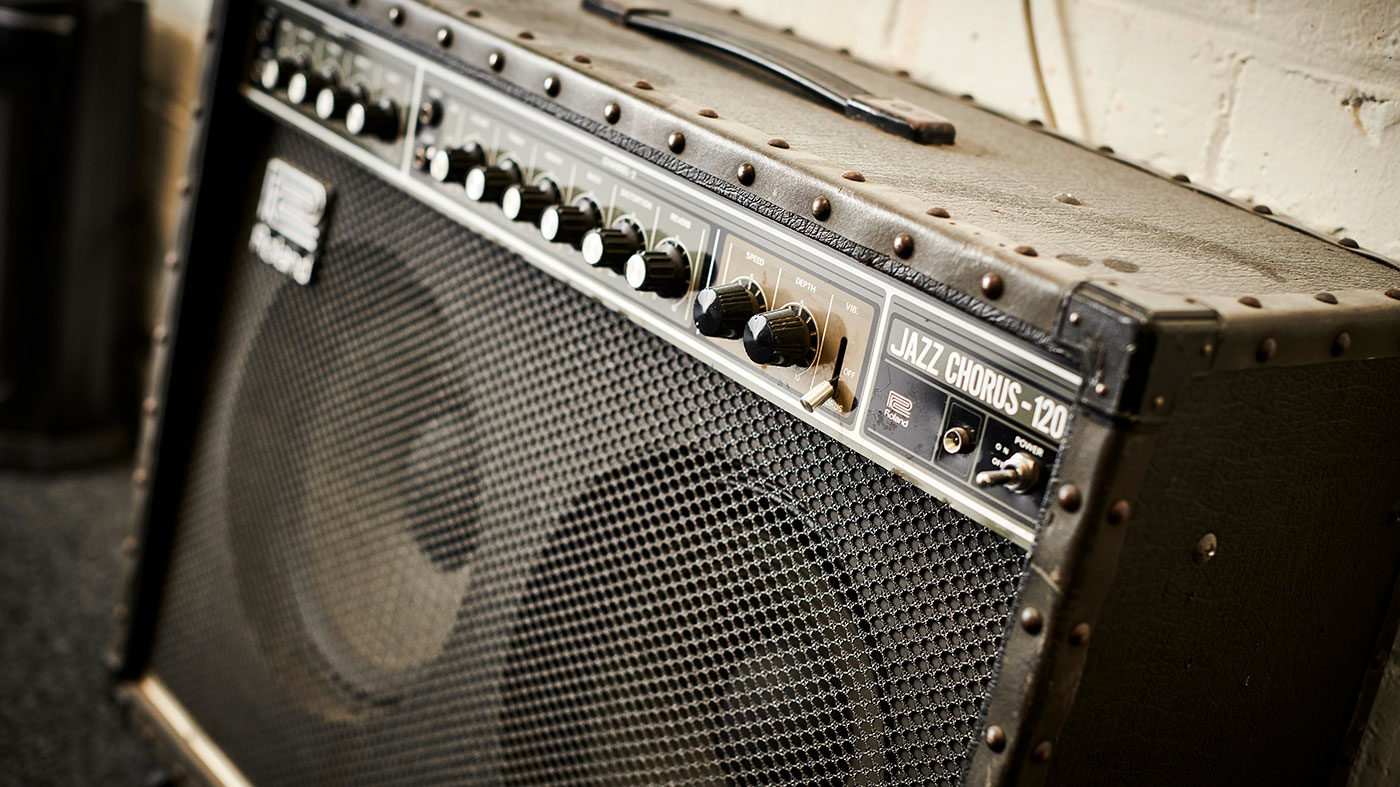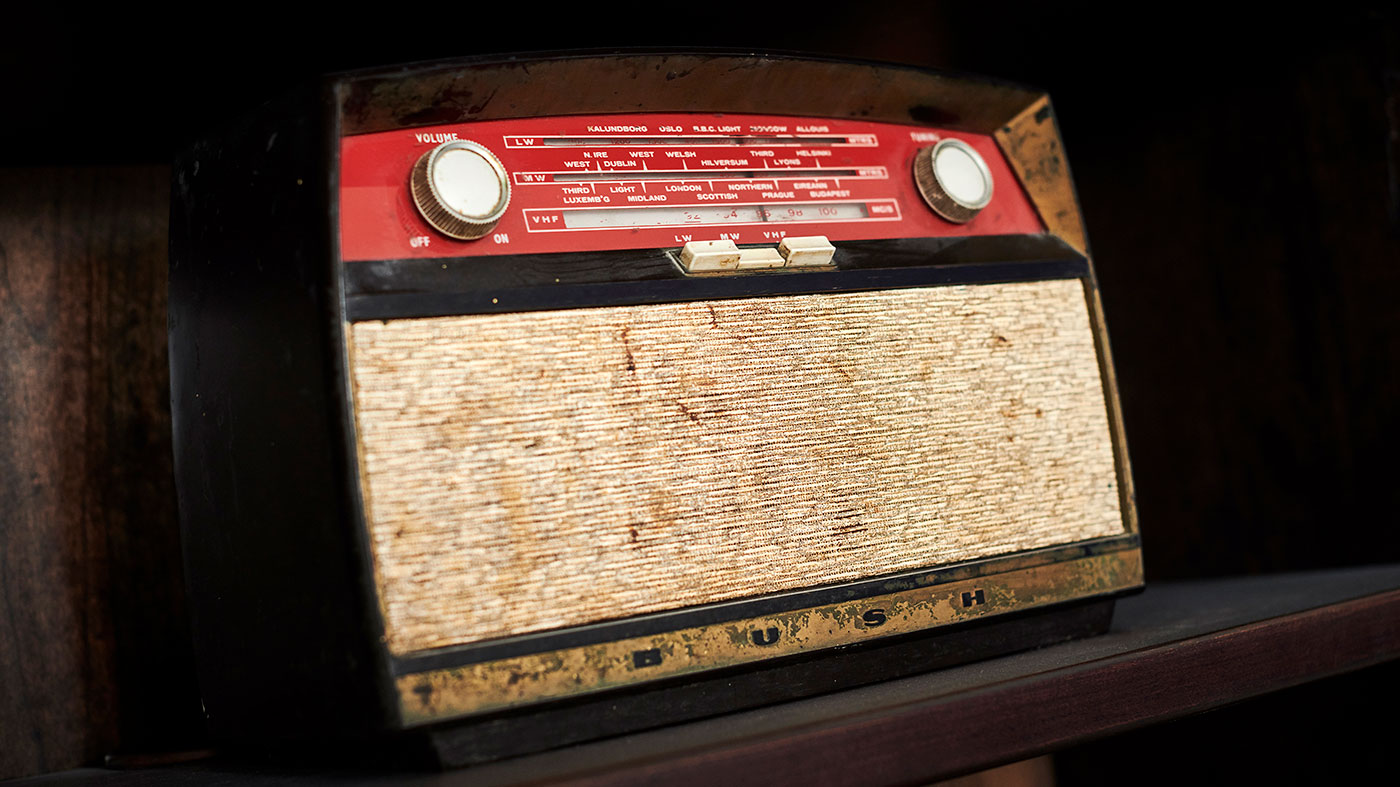In pictures: Johnny Marr's gear collection
A career in gear - we get a guided tour of Marr-selected guitars, amps and effects
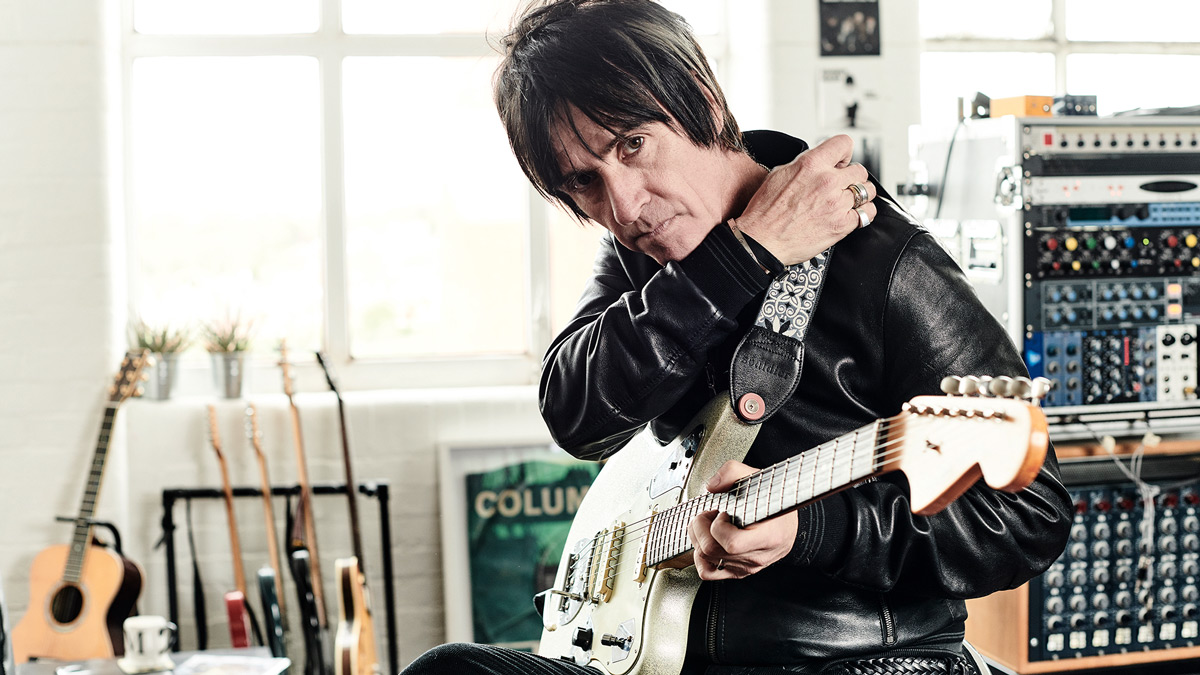
In a never-ending quest for new and inspiring sounds, Johnny’s obsession with guitars has yielded an impressive collection - here are just a few…
Walking into Johnny’s studio, we were confronted with a sight that is every guitar-lover’s dream. As tools of the trade, his diverse collection of tried-and-trusted guitars - each with their own merits - are positioned within swift reaching distance and are always ready for action whenever inspiration strikes. Each instrument tells its own story, but they are all the result of a lifelong passion.
“My story is the same as everyone else’s,” says Johnny. “That whole ‘you and your mates going down to the guitar shop on a Saturday’ thing is all part of guitar culture. When I was growing up, guitars were really exotic and hard to get your hands on. Sadly, there aren’t as many guitar shops around now, so it’s even more difficult to get your hands on them, I guess. They still hold wonder for someone who’s 14, though.
“I always had an instinct for finding good guitars - at least for what suited me. The moment I pick up a guitar in a shop, I kind of know whether I’m going to click with it or not - even before I’ve put my second hand on it!”
1959 Gibson ES-355 TDSV
One of the better-known guitars in the collection is this ’59 355, which was bought for Johnny by Seymour Stein from We Buy Guitars on 48th Street in New York, as part of the deal when The Smiths signed to Sire in 1984. As soon as Johnny got his hands on this Cherry Red beauty back at the hotel room, he immediately wrote The Smiths’ hit Heaven Knows I’m Miserable Now, shortly followed by the B-side Girl Afraid. “It’s a really wellbalanced instrument,” says Johnny. “The neck’s so nice on it.”
1954 Gibson ES-295
Having seen its fair share of action over the years, this ’54 ES295 can be seen being played by Johnny in the video for The Smiths’ 1985 single The Boy With The Thorn In His Side. The rare and highly sought after ES-295 is also synonymous with Elvis Presley’s guitarist Scotty Moore, who used one to record Elvis’ seminal Sun Records singles. Along with the original Les Paul model (also released in 1952), the green-tinged finish wear is typical of gold Gibson guitars of this period, as the brass flakes in the paint oxidise over time.
Gretsch 6122 Chet Atkins Country Gentleman
The best workhorse guitars aren’t always completely factory original. This firm studio favourite is referred to by Johnny as his “black Country Gent” on account of its stunning black refinish.
Want all the hottest music and gear news, reviews, deals, features and more, direct to your inbox? Sign up here.
Gretsch 6120 Chet Atkins Hollow Body/Nashville
This Gretsch 6120 is one of several guitars acquired by Johnny that once belonged to Pete Townshend. It was used to write and record Stretch Out And Wait on the B-side of The Smiths’ single Shakespeare’s Sister.
1963 Fender Jazzmaster
During his time with Modest Mouse in the mid 2000s, Johnny became obsessed with Jazzmasters and Jaguars, ultimately leading to his affiliation with Fender and the launch of the Johnny Marr Jaguar signature model.
1984 Gibson Les Paul Standard
This ’84 Les Paul - fitted with Seymour Duncan humbuckers and a Bigsby tailpiece - was acquired by Johnny for The Smiths album Meat Is Murder and was used to write That Joke Isn’t Funny Anymore and I Want The One I Can’t Have.
1983 Rickenbacker 330/6
This now iconic Jetglo-finish 330 was Johnny’s go-to live guitar during The Smiths’ early days and was used to record What Difference Does It Make? and Reel Around The Fountain from the band’s debut album.
1962 Epiphone Coronet
This ’62 Coronet is one of several guitars used by Johnny for alternative tunings and was used to record overdubs on William It Was Really Nothing, as well as the Shoplifters Of The World Unite B-side Half A Person.
1963 Gibson J-160E
Taking inspiration from The Beatles and Herman’s Hermits, Johnny picked up this ’63 J-160E during one of his regular trips to Denmark Street in London and subsequently used it to write William It Was Really Nothing.
Gretsch 7680 Atkins Super Axe
“I swapped my old 1980 Les Paul Standard for this. It needs fixing, but I’ve kept it in exactly the same condition it was in at the last Smiths gig I used it for. I never used the [built-in] phaser, but the compressor is amazing!” says Johnny.
1964 Epiphone Casino
This ’64 Casino was bought along with Johnny’s ’63 Gibson J160E during a shopping trip to Denmark Street in London shortly after the guitarist moved to Earls Court in the '80s. The guitar was used to record the main guitar parts for one of The Smiths’ best-known songs How Soon Is Now?.
In a moment of creative exploration during the session, Marr decided to re-amp the tracks using a quartet of Fender Twin Reverbs at high volume and stumbled upon perhaps one of the most instantly recognisable and inspired examples of amp tremolo in recorded history.
TEAC A-108 Sync Tape Machine
Johnny traded his old 1980 Les Paul for this TEAC A108 Sync tape machine and the Gretsch 7680 Atkins Super Axe shortly before the formation of The Smiths. Enabling him to experiment with layers of guitar overdubs, this machine was key to developing his imagination and skills in the art of writing and recording.
Lovetone pedals
Sonic experimentation is and has always been an important part of Johnny’s approach to playing guitar. This set of Lovetone pedals is a studio mainstay and includes (clockwise, left to right): the Ring Stinger ring modulator/octave fuzz; the Doppelganger phaser/ vibrato; the Meatball envelope filter; the Big Cheese fuzz; and the Brown Source overdrive.
Roland JC-120 Jazz Chorus Transistor Amp
With plenty of clean headroom at high volume and a particularly good-sounding chorus circuit, the Roland JC-120 Jazz Chorus transistor amp was an important part of Johnny Marr’s live rig since The Smiths’ first major tour of the UK (along with more traditional tube amplifiers, such as the 1956 Fender Bassman above).
Classic transistor radio
An important musical relic dating back to his childhood, some of the first music Johnny Marr ever heard emanated from this old radio in the Maher family home in Manchester during the 1960s. Johnny’s mum would hoist him up on a chair in front of this radio as he stood, for hours at a time, transfixed by the guitar parts.
Rod Brakes is a music journalist with an expertise in guitars. Having spent many years at the coalface as a guitar dealer and tech, Rod's more recent work as a writer covering artists, industry pros and gear includes contributions for leading publications and websites such as Guitarist, Total Guitar, Guitar World, Guitar Player and MusicRadar in addition to specialist music books, blogs and social media. He is also a lifelong musician.
